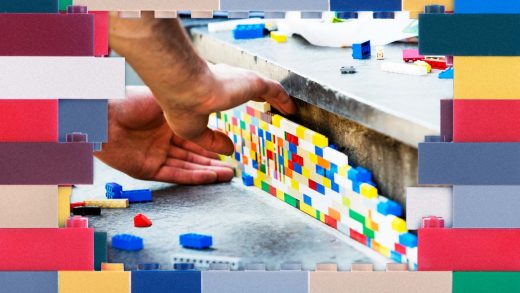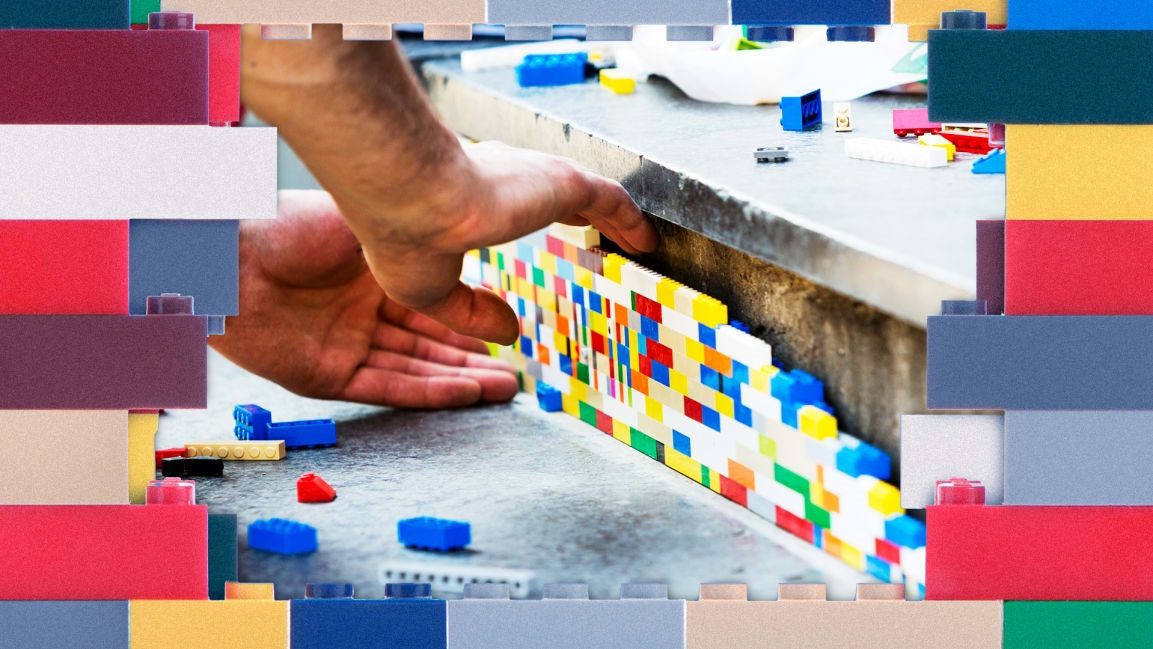Here’s how LEGO sets can make your workday more productive
A hot summer day spent pruning roses isn’t pleasant—there’s a lot of sweat and blood involved. But there’s a very real sense of accomplishment when you’re done. You turn around and see the hundreds of plants you just cleaned up, and you know without a doubt that you’ve done something. It’s a tangible sense of progress.
Humanity, I believe, is wired to crave that kind of accomplishment. Desk jobs don’t deliver it.
Which is why my coworker is building a LEGO rocket in his home office.
Productivity brick by brick
Fokke Zandbergen, a senior engineer at Zapier, reached out to me because he was inspired by an article I wrote in 2014.
It was about how I’d combined a simple set of LEGO bricks with a Pomodoro timer. I would work for 25 minutes, put one brick onto a platform, then take a five-minute break. The idea was that, at the end of the workday, I’d have a physical manifestation of the day’s work to look at. It’s no hoop house full of tidy rose plants, I’ll grant you, but it’s something—and it worked well for me.
Fokke tried the same system, with a few twists. First, he put the blocks across the room, so he’d have to get up and walk to them after completing a task. “I wanted to force myself to get out of my chair, getting up and looking outside the window for a bit,” he told me.
Second, he didn’t use the Pomodoro timer. “The 25-minute thing didn’t fit my workflow,” he said. “So instead, I’d force myself to decide on a specific task to work on, actually work on that, log what I’d done, then take a break.”
And there was one more tweak: Fokke color-coded his bricks.
“I used different colors to indicate how I felt about how I’d used the time,” he told me. Red bricks indicated a waste of time, yellow reflected an ok session, and blue indicated a very productive session (he was low on green).
This setup worked—when he used it.
Many days, he’d forget to use the system, and those days were consistently less productive. Fokke tried putting his snacks beside the bricks, thinking he’d be more likely to get up if there was food involved, but even that wasn’t enough motivation.
So Fokke decided to step things up a notch.
Blast off
The problem with the bricks, Fokke concluded, was that there’s no progress over time. The day ends, then you reset. For a while, he left a single brick on the board, so that he’d start the next day with some progress. It helped, but it still didn’t do the trick.
So he started building an entire LEGO set.
“My wife and kids bought me the Saturn V model, so I’m building that,” he told me. “Every time I complete a task, I do one step of the guide.”
This single set, Fokke estimates, will last a while. “The rocket is 330 steps, but there are a bunch of steps that you have to repeat,” he said. “So I’ll be busy for quite some time.”
There’s something about seeing tangible progress, day after day, that motivates Fokke in a way to-do list apps and time-tracking just don’t.
“Unless a time management app is blocking a part of my screen, it’s really easy to just ignore it,” he said. “A LEGO set, though? I can’t ignore that.”
It might seem odd, building LEGO sets in your office. But digital jobs don’t give you a lot of physical indication that you’re making progress. The LEGO set gives Fokke that sense of accomplishment. Maybe something similar will work for you.
This article originally appeared on Zapier’s blog and is reprinted with permission.
(70)



